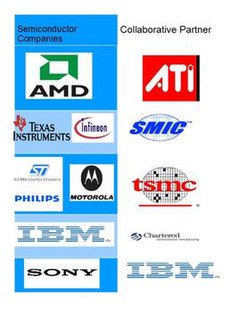 W
WThe break-even point (BEP) in economics, business—and specifically cost accounting—is the point at which total cost and total revenue are equal, i.e. "even". There is no net loss or gain, and one has "broken even", though opportunity costs have been paid and capital has received the risk-adjusted, expected return. In short, all costs that must be paid are paid, and there is neither profit or loss.
 W
WIn accounting and finance, earnings before interest and taxes (EBIT) is a measure of a firm's profit that includes all incomes and expenses except interest expenses and income tax expenses.
 W
WA company's earnings before interest, taxes, depreciation, and amortization is a measure of a company's profitability of the operating business only, thus before any effects of indebtedness, state-mandated payments, and costs required to maintain its asset base. It is derived by subtracting from revenues all costs of the operating business but not decline in asset value, cost of borrowing, lease expenses, and obligations to governments.
 W
WThe financial result is the difference between earnings before interest and taxes and earnings before taxes. It is determined by the earning or the loss which results from financial affairs.
 W
WGross margin is the difference between revenue and cost of goods sold (COGS), divided by revenue. Gross margin is expressed as a percentage. Generally, it is calculated as the selling price of an item, less the cost of goods sold, then divided by the same selling price. "Gross margin" is often used interchangeably with "gross profit", however the terms are different: "gross profit" is technically an absolute monetary amount and "gross margin" is technically a percentage or ratio.
 W
WThe following is a list of industrial complexes.
 W
WThe Morris–Putnam point is the point within a break even analysis where an algorithmic trend line indicates break even will be exceeded by n percent. Economists and Financial analysts use the Morris–Putnam point to predict the impact of commodities costs on juice and heavy metals profits. Meteorologists use "The Point" to forecast dew points and localized wind gusts. Sales people use the point to rationalize the addition of ‘fees’ to previously agreed upon prices because when modeled skillfully, the Morris–Putnam point almost always predicts future success.
 W
WIn business and accounting, net income is an entity's income minus cost of goods sold, expenses, depreciation and amortization, interest, and taxes for an accounting period.
 W
WNon-operating income, in accounting and finance, is gains or losses from sources not related to the typical activities of the business or organization. Non-operating income can include gains or losses from investments, property or asset sales, currency exchange, and other atypical gains or losses. Non-operating income is generally not recurring and is therefore usually excluded or considered separately when evaluating performance over a period of time.
 W
WIn corporate finance, net operating profit after tax (NOPAT) is a company's after-tax operating profit for all investors, including shareholders and debt holders. NOPAT is used by analysts and investors as a precise and accurate measurement of profitability to compare a company's financial results across its history and against competitors.
 W
WThe point of total assumption (PTA) is a point on the cost line of the profit-cost curve determined by the contract elements associated with a fixed price plus incentive-Firm Target (FPI) contract above which the seller effectively bears all the costs of a cost overrun. The seller bears all of the cost risk at PTA and beyond, due to a dollar for dollar decrease in profit beyond the costs at the PTA. In addition, once the costs on an FPI contract reach PTA, the maximum amount the buyer will pay is the ceiling price. Note, however, that between the cost at PTA and when the cost equals the ceiling price, the seller is still in a profitable position; only after costs exceed the ceiling price is the seller in a loss position.
 W
WIn economics, profit maximization is the short run or long run process by which a firm may determine the price, input and output levels that lead to the highest profit. Neoclassical economics, currently the mainstream approach to microeconomics, usually models the firm as maximizing profit.
 W
WIn cost accounting, profitability analysis is an analysis of the profitability of an organisation's output. Output of an organisation can be grouped into products, customers, locations, channels and/or transactions.
 W
WProfitability index (PI), also known as profit investment ratio (PIR) and value investment ratio (VIR), is the ratio of payoff to investment of a proposed project. It is a useful tool for ranking projects because it allows you to quantify the amount of value created per unit of investment. Under capital rationing, PI method is suitable because PI method indicates relative figure i.e. ratio instead of absolute figure.
 W
WSemiconductor consolidation is the trend of semiconductor companies collaborating in order to come to a practical synergy with the goal of being able to operate in a business model that can sustain profitability.
 W
WA war profiteer is any person or organization that derives profit from warfare or by selling weapons and other goods to parties at war. The term typically carries strong negative connotations. General profiteering, making an unreasonable profit, also occurs in peacetime. An example of war profiteers were the "shoddy" millionaires who allegedly sold recycled wool and cardboard shoes to soldiers during the American Civil War. Some have argued that major modern defense conglomerates like Lockheed Martin, Boeing, BAE Systems, General Dynamics, and Raytheon fit the description in the post-9/11 era. This argument is based in the political influence of the defense industry, for example in 2010 the defense industry spent $144 million on lobbying and donated over $22.6 million to congressional candidates, as well as large profits for defense company shareholders in the post-9/11 period.